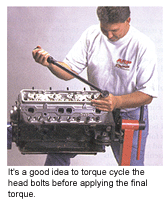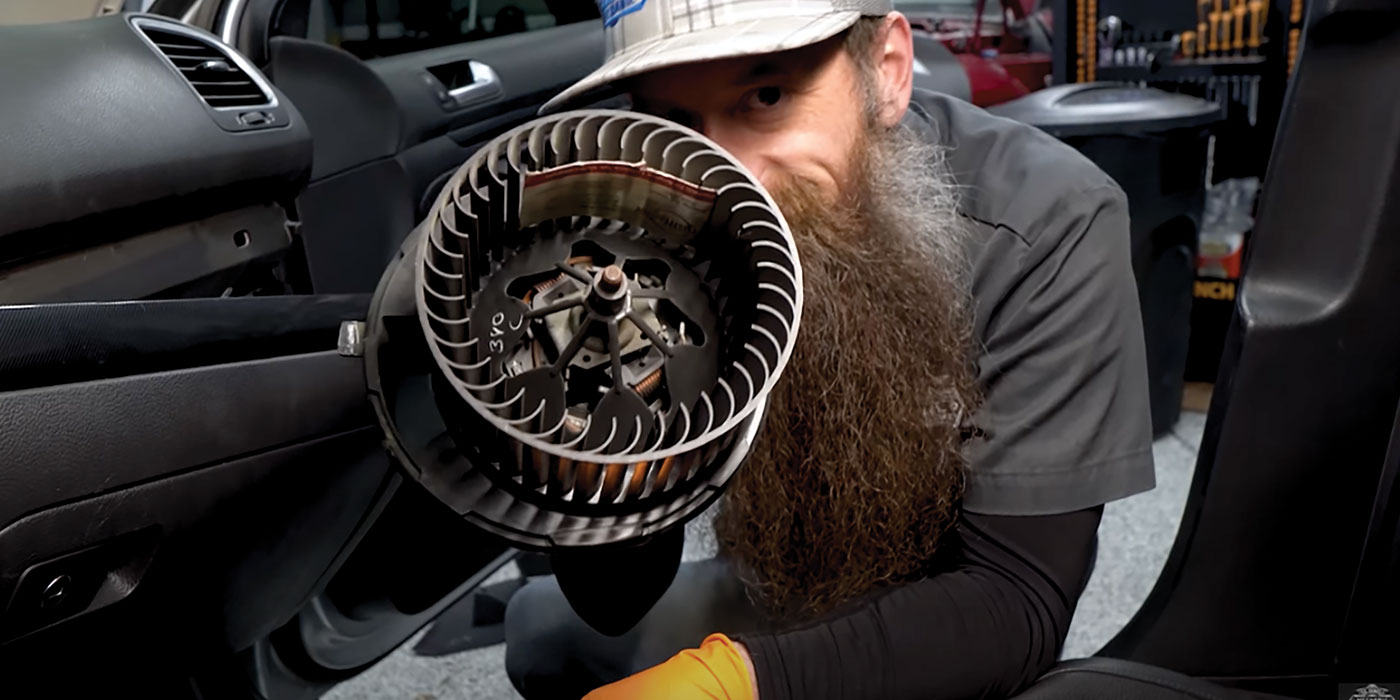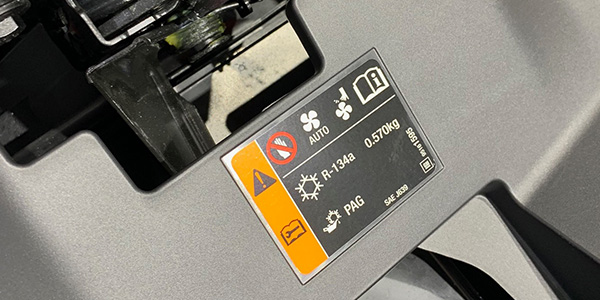The installation of gaskets is one of the most important aspects of rebuilding an engine. Gaskets provide a seal between mating surfaces so oil, coolant, vacuum and pressure don’t leak. As long as all the gaskets are installed properly, everything should be fine, and the engine shouldn’t leak. But, as every rebuilder or technician knows, even a small leak can create an expensive warranty problem for you and your customer.
When gaskets are installed, a good seal depends on proper loading and torque. This is especially critical with head gaskets because of the high pressures they must withstand when the engine is running.
The amount of torque that’s applied to each head bolt, as well as the order in which the bolts are tightened, determines how the clamping force is distributed across the surface of the gasket. If one area of the gasket is under high clamping force while another area is not, it may allow the gasket to leak at the weakly clamped point. So all the head bolts must be tightened in a specified sequence and torqued to a specified value to ensure the best possible seal.
With pan and cover gaskets, overtightening can crush the gasket causing it to slip or split. Many gaskets have grommets that control the amount of crush, and others have metal or plastic carriers that provide added support and reinforcement. Using an inch-pound torque wrench is recommended on the fasteners for these types of gaskets to make sure they are clamped with just the right amount of loading.
Paying attention to the following 10 suggestions should help reduce gasket problems caused by improper tightening:
1. Make sure all the head bolts are in perfect condition with clean, undamaged threads. Dirty or damaged threads can give false torque readings, as well as decrease a bolt’s clamping force by as much as 50%! Wire brush all bolt threads, carefully inspect each one, and replace any that are nicked, deformed or worn.
2. Dirty or deformed hole threads in the engine block can reduce clamping force the same as dirty or damaged threads on the bolts. Run a bottoming tap down each bolt hole in the block. The tops of the holes should also be chamfered so the uppermost threads won’t pull above the deck surface when the bolts are tightened. Finally, clean all holes to remove any debris.
3. For head bolts that screw into blind holes, lightly lubricate the bolt threads as well as the underside of the bolt heads with engine oil. For head bolts that extend into a coolant jacket, coat the threads with a flexible sealer. Failure to coat the threads may allow coolant to leak past the bolt.
4. Many engines today use “torque-to-yield” (TTY) head bolts that stretch slightly when installed. This provides more even head loading and allows the bolts to hold torque better for improved head gasket sealing.
When the bolts are installed, they’re first tightened to a specific torque – then tightened an additional amount that’s measured in degrees of rotation. This final twist stretches the bolts to their yield point and creates the elastic clamping force that provides more even loading across the head and gasket.
Because TTY head bolts stretch slightly (only a few thousandths of an inch), some auto makers say they should not be reused when the cylinder head is removed. Reusing TTY bolts will cause them to stretch further, which increases the risk of breakage. A stretched bolt also will not hold the same torque load as before, which may cause a loss of clamping force resulting in head gasket leakage. The best insurance may be to replace all TTY bolts when rebuilding and reinstalling a cylinder head with new head bolts.
 5. Check bolt lengths. Make sure you have the correct length bolts for the application and for each hole location (some holes require longer or shorter bolts than others). Bolts should also be measured or compared to one another to check for stretch. Any bolt found to be stretched must be replaced because (1) it may be dangerously weak; (2) it won’t hold torque properly; and (3) it may bottom out when installed in a blind hole.
5. Check bolt lengths. Make sure you have the correct length bolts for the application and for each hole location (some holes require longer or shorter bolts than others). Bolts should also be measured or compared to one another to check for stretch. Any bolt found to be stretched must be replaced because (1) it may be dangerously weak; (2) it won’t hold torque properly; and (3) it may bottom out when installed in a blind hole.
6. When installing head bolts in aluminum cylinder heads, hardened steel washers must be used under the bolt heads to prevent galling of the soft aluminum and to help distribute the load. Make sure the washers are positioned with their rounded or chamfered side up, and that there is no debris or burrs under the washers.
7. Resurfacing a cylinder head decreases its overall height, so be sure to check bolt lengths to make sure they won’t bottom out in blind holes. If a bolt bottoms out, it will apply little or no clamping force on the head, which may allow the gasket to leak.
If a head has been milled and one or more head bolts may be dangerously close to bottoming out, the problem can be corrected by either using hardened steel washers under the bolts to raise them up, by using a thicker head gasket, or by installing a steel or copper shim under the head gasket to restore proper head height and compression.
8. Always look up the specified tightening sequence and recommended head bolt torque values for an engine before installing the head gasket. Don’t guess.
9. Use an accurate torque wrench to tighten standard type head bolts in three to five incremental steps following the recommended sequence and torque specs for the application. Tightening the bolts down gradually creates an even clamping force on the gasket and reduces head distortion. It’s a good idea to double check the final torque readings on each head bolt to make sure none have been missed and that the bolts are retaining torque normally. If a bolt is not coming up to normal torque or is not holding a reading, it means trouble. Either the bolt is stretching or the threads are pulling out of the block.
With TTY head bolts, a “Torque-To-Angle Indicator” should be used in conjunction with a torque wrench to achieve proper bolt loading. After the head bolts have been torqued to the specified value, using the angle tool to accurately measure the additional degrees of rotation eliminates guesswork and assures more consistent results.
10. If a head gasket requires retorquing, run the engine until it reaches normal operating temperature (usually 10 to 15 minutes), then shut it off. Retighten each head bolt in the same sequence as before while the engine is still warm. If the engine has an aluminum cylinder head or block, however, don’t retorque the head bolts until the engine has cooled back down to room temperature.
On some applications with retorque-style head gaskets, it may be necessary to retorque the head a third time after a specified time or mileage interval due to the design of the engine. Always follow the vehicle manufacturer’s recommendations.







